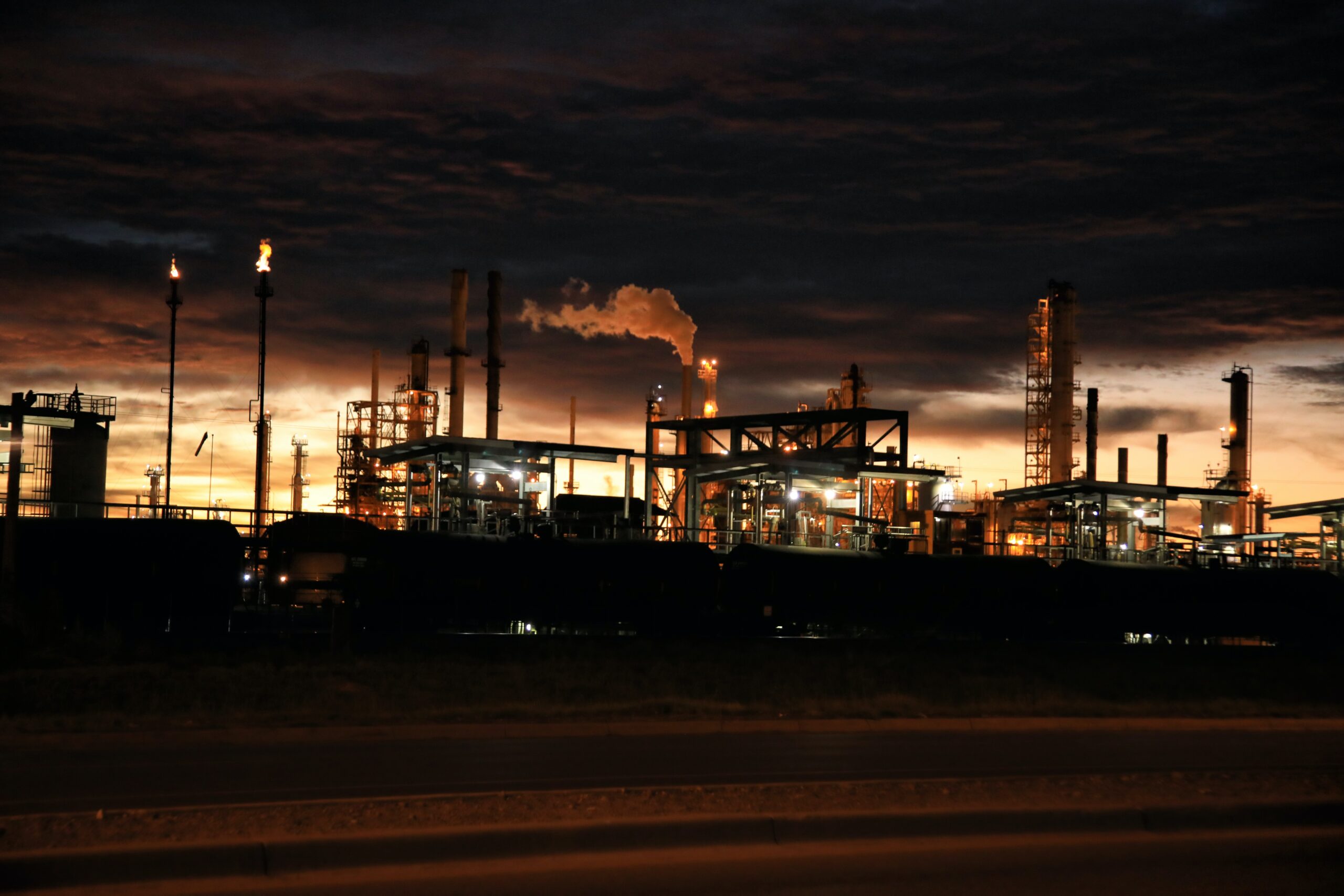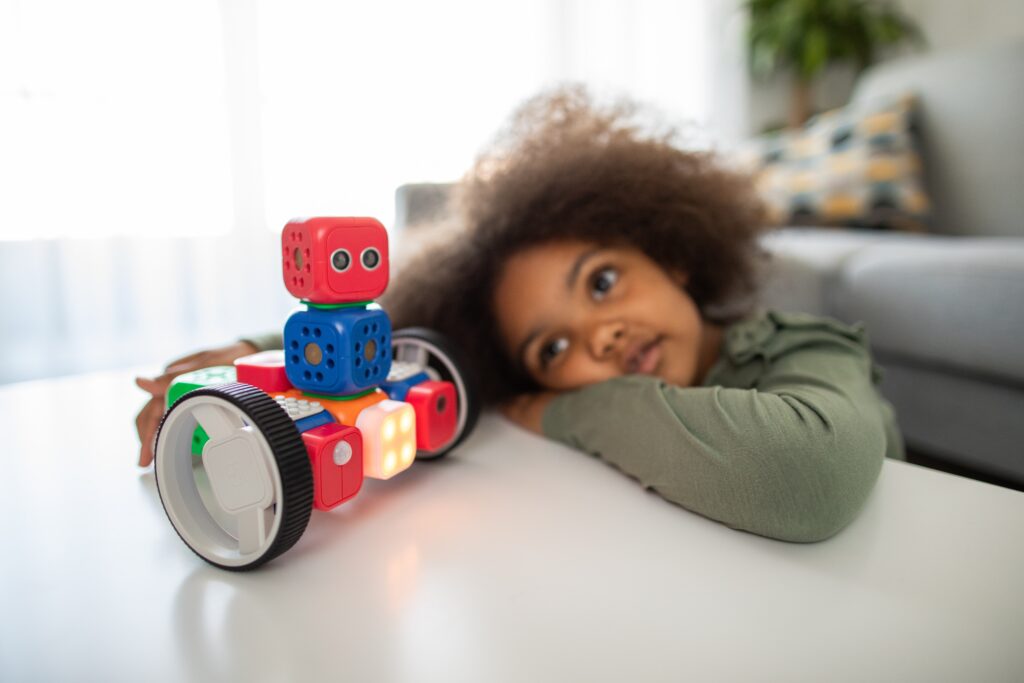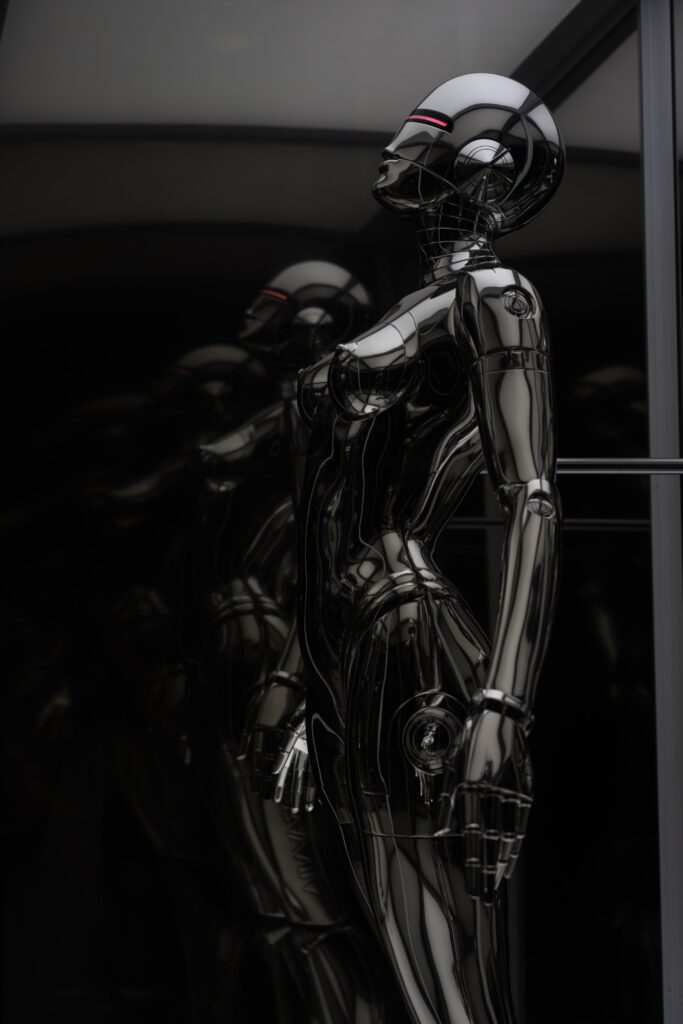
In the world of manufacturing, the integration of AI and robotics has revolutionized production processes. The combined power of artificial intelligence and robotics has paved the way for increased efficiency, productivity, and precision. With this game-changing technology, companies can now streamline their production processes, optimizing every step from assembly to quality control. By harnessing the capabilities of AI and robotics, manufacturers are taking automation to a whole new level, enabling them to meet the ever-growing demands of the market.
1. Overview of AI and Robotics in Manufacturing
1.1 Definition of AI and Robotics
AI, or Artificial Intelligence, refers to the ability of machines to simulate human intelligence. It involves the development of computer systems that can perform tasks that would typically require human intelligence, such as speech recognition, decision-making, and learning. On the other hand, robotics involves the design, creation, and use of robots to perform various tasks autonomously or with minimal human intervention.
1.2 Importance of AI and Robotics in Manufacturing
The integration of AI and robotics in manufacturing has revolutionized the industry, offering numerous benefits and opportunities for businesses. These technologies have transformed traditional manufacturing processes by introducing automation and enhancing productivity. Through the use of AI and robotics, manufacturing companies can streamline their production processes, improve efficiency, quality control, and reduce labor costs. Moreover, AI and robotics enable businesses to achieve 24/7 production capability and enhance safety measures, ultimately improving overall performance and competitiveness in the global market.
2. Benefits of AI and Robotics in Manufacturing
2.1 Increased Efficiency and Productivity
One of the key advantages of utilizing AI and robotics in manufacturing is the significant increase in efficiency and productivity. Robots can perform tasks at high speeds and with great accuracy, resulting in faster production cycles and reduced errors. By automating routine and repetitive tasks, manufacturers can optimize their workflow and minimize human error, ultimately improving the overall efficiency of the production line.
2.2 Improved Quality Control
AI and robotics offer advanced quality control capabilities, ensuring the production of high-quality products consistently. Through the use of sensors and machine learning algorithms, robots can detect defects or anomalies in real-time, enabling immediate corrective actions. This not only reduces the need for human intervention in quality control processes but also minimizes the chances of faulty products reaching the market, thus enhancing customer satisfaction.
2.3 24/7 Production Capability
With the integration of AI and robotics, manufacturing companies can achieve 24/7 production capability. Unlike human workers who require rest and have limited working hours, robots can work around the clock without compromising on quality or performance. This allows businesses to meet increased demand, reduce lead times, and gain a competitive edge in the market.
2.4 Reduction in Labor Costs
The implementation of AI and robotics in manufacturing processes leads to a reduction in labor costs. While initial investments may be required to set up automated systems, the long-term benefits outweigh the costs. Robots can perform tasks that would typically require multiple human workers, minimizing the need for a large workforce and associated expenses such as salaries, benefits, and training. This cost savings allows companies to allocate resources to other areas of the business and invest in further technological advancements.
2.5 Enhanced Safety Measures
Safety is a paramount concern in any manufacturing environment. AI and robotics play a critical role in enhancing safety measures by minimizing the presence of humans in potentially hazardous situations. Robots can handle dangerous materials, perform tasks in high-risk environments, and work in extreme conditions without compromising their performance or safety. By reducing the risk of accidents and injuries, AI and robotics contribute to a safer and healthier working environment for both humans and machines.

3. Integration of AI and Robotics in Manufacturing Processes
3.1 Automation of Routine Tasks
The automation of routine tasks is one of the primary applications of AI and robotics in manufacturing. Robots can be programmed to perform repetitive actions with high precision and speed, such as assembly line operations or material handling. This not only increases the efficiency of the production processes but also reduces the risk of human error and fatigue.
3.2 Precision and Repetition in Manufacturing
Precision and repetition are crucial aspects of manufacturing processes, especially in industries that require high accuracy and consistency. AI and robotics excel in these areas, as they can perform tasks with extreme precision and repeat them consistently without fatigue or loss of focus. This level of accuracy ensures that products meet stringent quality standards and customer expectations.
3.3 Machine Learning for Continuous Improvement
Machine learning algorithms are integrated into AI systems to enable continuous improvement in manufacturing processes. By analyzing data from various sources, such as sensors or historical records, AI systems can learn from patterns and make predictions or suggestions for optimization. This allows manufacturers to identify areas of improvement, reduce waste, and optimize production parameters to achieve higher levels of efficiency and quality.
3.4 Robotics for Material Handling
Robots play a significant role in material handling processes within manufacturing facilities. They can be programmed to perform tasks such as picking, placing, and transferring materials or components between different stages of production. By automating material handling, manufacturers can minimize the risk of damage, improve traceability, and optimize the flow of materials throughout the production line.
3.5 AI for Predictive Maintenance
Predictive maintenance is a proactive approach to maintenance that utilizes AI to predict the failure of equipment or machinery before it occurs. By analyzing data from sensors and historical records, AI systems can detect patterns or anomalies that indicate potential malfunctions. This enables manufacturers to schedule maintenance activities in advance, preventing unplanned downtime and reducing the risk of costly breakdowns.
4. AI and Robotics Applications in Different Stages of Manufacturing
4.1 Design and Prototyping
AI and robotics have revolutionized the design and prototyping stage of manufacturing. Computer-aided design (CAD) software, combined with AI algorithms, enables designers to generate complex 3D models and simulate the behavior of the product before physical production. This significantly reduces time and costs associated with traditional prototyping methods, allowing manufacturers to bring products to market faster.
4.2 Assembly and Production
Automation of assembly and production processes is a well-established application of AI and robotics in manufacturing. Robots can perform intricate assembly tasks that require high precision and delicacy. They can also handle repetitive operations on the assembly line, such as fastening bolts or applying adhesives, with consistent quality and speed. By integrating robots into the production line, manufacturers can achieve higher throughput and minimize human error.
4.3 Quality Control and Inspection
Quality control and inspection are critical stages in the manufacturing process to ensure that products meet quality standards. AI and robotics play a vital role in automating these processes and reducing the reliance on human inspection. Through the use of machine vision systems, robots equipped with cameras and sensors can detect defects, measure dimensions, and perform quality checks at a much faster pace and with higher accuracy.
4.4 Inventory Management
AI and robotics have also revolutionized inventory management in manufacturing. By leveraging data analytics and AI algorithms, manufacturers can optimize inventory levels, reduce stockouts or overstocking, and improve demand forecasting. Robots can be deployed to perform tasks such as inventory counting or stock replenishment, ensuring accurate and efficient management of inventory throughout the manufacturing facility.
4.5 Packaging and Shipping
Packaging and shipping are final stages in the manufacturing process before products reach the end-user. AI and robotics have streamlined these processes by automating packaging operations and optimizing shipping logistics. Robots can handle packaging tasks, such as labeling, sealing, or stacking, with speed and precision, ensuring consistent packaging quality and minimizing transportation costs.

5. Case Studies: Successful Implementation of AI and Robotics in Manufacturing
5.1 Adidas: SpeedFactory
Adidas, a leading sportswear manufacturer, implemented AI and robotics in its SpeedFactory production facility. By combining 3D printing, robotics, and AI, Adidas was able to create customized shoes at an unprecedented speed. The integration of AI algorithms allowed for optimized production processes and improved supply chain efficiency. This successful implementation of AI and robotics enabled Adidas to meet increasing customer demands and provide unique products in the market.
5.2 BMW: Collaborative Robotics
BMW, a renowned automotive manufacturer, utilizes collaborative robotics in its production facilities to enhance efficiency and worker safety. Collaborative robots, also known as cobots, work alongside human workers, assisting in tasks that require strength or precision. By using AI algorithms, these robots can adapt to changing production needs and work seamlessly with human counterparts, improving productivity and ergonomics on the assembly line.
5.3 Foxconn: Lights-Out Factory
Foxconn, a major contract manufacturer for electronics, operates lights-out factories that are fully automated and run by AI and robotics. These factories operate without human intervention, with robots handling all stages of production, from assembly to quality control. By eliminating the need for human workers, Foxconn achieved unparalleled levels of efficiency and productivity, reducing costs and maintaining high product quality.
5.4 Amazon: Warehouse Automation
Amazon, the world’s largest online marketplace, relies heavily on AI and robotics to automate its order fulfillment processes. Robotic systems, such as autonomous mobile robots (AMRs), are used to navigate warehouses, retrieve products, and deliver them to human workers for packaging. This integration of AI and robotics enables Amazon to efficiently handle a vast number of orders, reduce order processing times, and meet customer expectations for fast and accurate deliveries.
6. Challenges and Limitations of AI and Robotics in Manufacturing
6.1 High Initial Investment
Implementing AI and robotics in manufacturing can involve a significant initial investment. The costs associated with acquiring and setting up robotic systems, integrating AI algorithms, and training personnel can be substantial. However, it is important to consider the long-term benefits and potential cost savings that can be achieved through increased efficiency, reduced labor costs, and improved quality control.
6.2 Technical Complexity
AI and robotics technology can be highly complex, requiring specialized knowledge and expertise for successful implementation. Manufacturers may face challenges in understanding and adapting to the technical aspects of these technologies. To overcome this limitation, it is crucial for companies to invest in training and development programs to equip their workforce with the necessary skills to operate and maintain AI and robotics systems.
6.3 Integration with Existing Systems
Integrating AI and robotics into existing manufacturing systems or processes can pose challenges. Compatibility issues with legacy systems or lack of interoperability between different technologies can hinder the seamless integration of AI and robotics. Close collaboration between manufacturing engineers, IT specialists, and automation experts is essential to ensure smooth integration and minimize disruptions to ongoing operations.
6.4 Workforce Adaptation
The introduction of AI and robotics in manufacturing processes may lead to concerns among workers regarding job security and changing job roles. It is important for manufacturers to communicate the benefits and intentions behind implementing these technologies and provide training opportunities to help workers adapt to new job requirements. By reassigning workers to more complex or value-added tasks, companies can improve job satisfaction and retain skilled employees.
6.5 Ethical Considerations
As AI and robotics become more prevalent in manufacturing, ethical considerations become crucial. Questions regarding privacy, data security, and the potential impact on employment need to be addressed. Manufacturers must develop a comprehensive ethical framework to ensure responsible use of AI and robotics, protect employee and consumer rights, and mitigate potential ethical risks that may arise from the adoption of these technologies.

7. Future Outlook for AI and Robotics in Manufacturing
7.1 Continued Advancements in Robotics
The future of AI and robotics in manufacturing holds great potential for further advancements. Continued research and development will lead to the creation of more capable and versatile robots with enhanced sensory abilities, dexterity, and intelligence. These advancements will result in robots capable of performing increasingly complex tasks, leading to further automation in manufacturing processes.
7.2 AI and Big Data Analytics
The integration of AI and big data analytics will allow manufacturers to leverage vast amounts of data generated throughout the production process. AI algorithms can analyze this data to uncover patterns, optimize production parameters, and make real-time decisions to enhance efficiency and quality control. The utilization of AI and big data analytics will provide manufacturers with valuable insights and enable data-driven decision-making.
7.3 Human-Robot Collaboration
The future of AI and robotics in manufacturing lies in the collaboration between humans and robots. As robots become more sophisticated, they will work alongside human workers rather than replacing them. This collaboration will leverage the unique strengths of both humans and robots, achieving higher levels of productivity, efficiency, and innovation.
7.4 Impact on Job Market
The integration of AI and robotics in manufacturing will inevitably have an impact on the job market. While some jobs may be replaced by robots, new job roles will emerge that require skills in programming, maintenance, and supervision of AI and robotics systems. It is crucial for educational institutions and organizations to invest in reskilling and upskilling programs to ensure a smooth transition and address potential workforce displacements.
7.5 Ethical and Legal Frameworks
As the use of AI and robotics in manufacturing grows, there is a need for robust ethical and legal frameworks. These frameworks should address concerns such as data privacy, security, accountability, and the responsible use of AI and robotics. Manufacturers, governments, and regulatory bodies must collaborate to develop and implement these frameworks to ensure the responsible and ethical deployment of AI and robotics in the manufacturing industry.
In conclusion, the integration of AI and robotics in manufacturing processes offers numerous benefits and opportunities for businesses. From increased efficiency and productivity to improved quality control and safer working environments, AI and robotics are transforming the industry. Successful case studies in various manufacturing companies demonstrate the impact of these technologies in streamlining production processes. However, challenges such as high initial investment, technical complexity, and workforce adaptation need to be addressed. Looking ahead, the future of AI and robotics in manufacturing holds great potential for continued advancements, human-robot collaboration, and the development of ethical and legal frameworks to guide responsible use.



